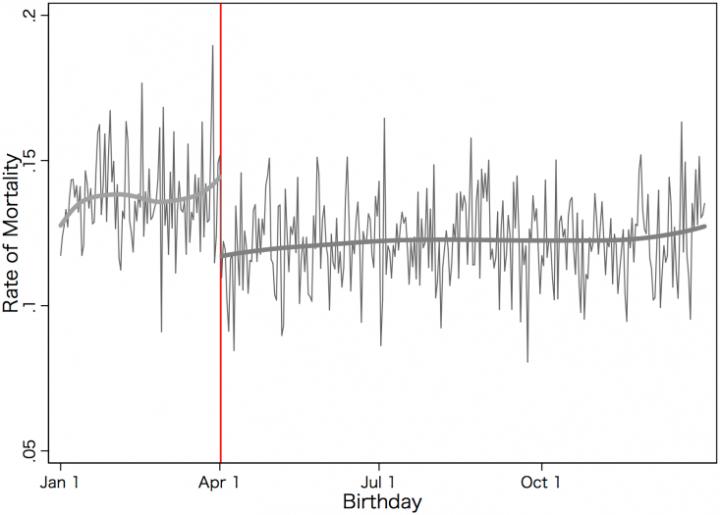This news release is available in Japanese.
Researchers from Osaka University, Japan, and Syracuse University, USA, found for the first time that those who were born right before the school cutoff day and thus youngest in their cohort have 30 % higher mortality rates by suicide, compared to their peer who were born right after the cutoff date and thus older. They also found that those with relative age disadvantage tend to follow a different career path that those with relative age advantage, which may explain their higher suicide mortality rates.
Tetsuya Matsubayashi, associate professor of Osaka University and Michiko Ueda, research assistant professor of Syracuse University, examined how relative age in a grade affects suicide rates of adolescents and young adults between 15 and 25 years of age using individual death records in the Vital Statistics of Japan. Implementing a regression discontinuity design, they verified that those who were born right before the school cutoff day and thus youngest in their cohort have higher mortality rates by suicide, compared to their peer who were born right after the cutoff date and thus older. This study showed that the relative age at school entry affects mortality rates by suicide, not just academic performance and economic outcomes as the previous research has demonstrated. This study highlighted the importance of policy intervention that alleviates the relative age effect. Given that education at the early stage of life plays an important role in people's future well-being, the arbitrary cutoff of school entry will generate a life-time disadvantage by the timing of birth for a non-trivial number of people. This study suggested that policy intervention that alleviates the relative age effect can be important.

IMAGE: The rate of suicide is plotted against the date of birth. The red line denotes the school entry cutoff date (i.e., Aprils 2nd) in Japan. The gray thick line represents...
(Credit: Osaka University)
source: Osaka University